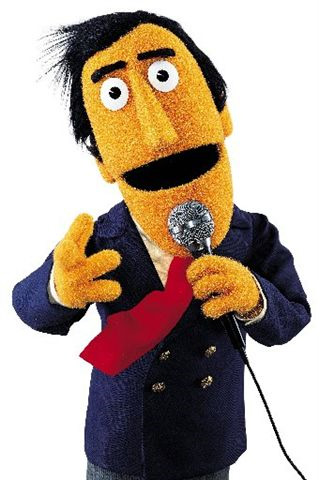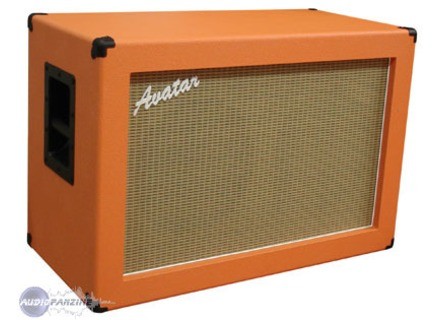- RadioActive
- Moderator
 Offline
Offline
What Happened To The "870" Radio/TV Phone Prefix?
I noticed that AM640, which is always running promos for texts on (416) 870-6400, is giving out a different phone number on Wednesday. People are being invited to call (416) 604-6400. That's the first time in decades I've heard any Toronto radio station not give out that infamous "870" prefix.
As I recall, it was created specifically for radio and TV stations in Toronto, so as not to blow out the phone lines when they were doing a contest or a talk show with a huge guest. Is this just because the fill-ins are doing their shows remotely? (I believe Dave Kaufman, for example, is coming from Vancouver, while doing a show heard only in Ontario.) But why change the number, which most listeners are familiar with?
Is this the end of the "870" brand? I remember the old one from decades ago - I think it was "929"-# # # #." But it was a lifetime passed, and I can't remember if everyone else used that. Strange, in an era where cell phones mean you don't need to remember any numbers, what stays in your brain. 
Chart courtesy CHUM Tribute site
- RadioActive
- Moderator
 Offline
Offline
Re: What Happened To The "870" Radio/TV Phone Prefix?
Both Stephanie Smyth and Dave Kaufman used it repeatedly, so I'm not sure they'd let a mistake go on that long. If Ben Mulroney takes calls, we'll see what he uses.
- •
- RadioAaron
- Member
 Offline
Offline
Re: What Happened To The "870" Radio/TV Phone Prefix?
Technology has made is such that high volume lines don't need to be quarantined into their own prefixes.
- RadioActive
- Moderator
 Offline
Offline
Re: What Happened To The "870" Radio/TV Phone Prefix?
Bizarrely, Ben Mulroney, sitting in for Oakley, just invited phone calls - but never gave out the number!
Update: He did solicit callers again, this time using the regular 870 number. Could it be the hosts doing it remotely were given an alternate for some reason?
Last edited by RadioActive (December 27, 2023 4:23 pm)
- •
- RadioAaron
- Member
 Offline
Offline
Re: What Happened To The "870" Radio/TV Phone Prefix?
Binson Echorec wrote:
That makes no sense though. Callers have to be routed through the board to get on the air so they still have to call the station, regardless of where the host may be located.
This is no longer true.
Don't know if that's what they're doing here, but talk shows can be hosted remotely with no op and the host controlling calls.
- RadioActive
- Moderator
 Offline
Offline
Re: What Happened To The "870" Radio/TV Phone Prefix?
I'm going to listen on Thursday to see if this happens again on either of those two shows.
- •
- RadioActive
- Moderator
 Offline
Offline
Re: What Happened To The "870" Radio/TV Phone Prefix?
I just called the alternate number to see what would happen. I got a voicemail saying "the person is not available" and that his name was Daniel. Curioser and curioser, said Alice.
- •
- Peter the K
- Member
 Offline
Offline 
Re: What Happened To The "870" Radio/TV Phone Prefix?
A very simplified explanation:
Years ago, the first three digits of the phone number, like 870, referred to a specific phone exchange. A phone exchange was located in physical central office. Usually, a typical exchange could handle a certain number of simultaneous calls, either incoming or outgoing although usually the 870 line was never used for outgoing calls. I don't know where the 870 exchange was physically located, but it was designated as high traffic and used for high call traffic customers like radio stations so when calls started coming in they would go through one central location keeping all the heavy traffic off other exchnges.
Today, with VOIP and digital switching, it doesn't really matter anymore. There really isn't a need for high traffic handling switches they are all capable of handling higher traffic without "plugging up" the exchange.
Likewise, the concept of "long distance" really doesn't exist anymore. It's only a way for some phone companies to get more money out of people who are used to paying extra for making "out of area" calls. Although I moved to K-W five years ago, I still have both a 647 and a 416 number. Nobody bats an eyelash when I give them the Toronto number to call me.
- Radiowiz
- Member
 Offline
Offline 
Re: What Happened To The "870" Radio/TV Phone Prefix?
Peter the K wrote:
A very simplified explanation:
Years ago, the first three digits of the phone number, like 870, referred to a specific phone exchange. A phone exchange was located in physical central office. Usually, a typical exchange could handle a certain number of simultaneous calls, either incoming or outgoing although usually the 870 line was never used for outgoing calls. I don't know where the 870 exchange was physically located, but it was designated as high traffic and used for high call traffic customers like radio stations so when calls started coming in they would go through one central location keeping all the heavy traffic off other exchnges.
Today, with VOIP and digital switching, it doesn't really matter anymore. There really isn't a need for high traffic handling switches they are all capable of handling higher traffic without "plugging up" the exchange.
Likewise, the concept of "long distance" really doesn't exist anymore. It's only a way for some phone companies to get more money out of people who are used to paying extra for making "out of area" calls. Although I moved to K-W five years ago, I still have both a 647 and a 416 number. Nobody bats an eyelash when I give them the Toronto number to call me.
YET
Z103 has never had an 872 or 870 number.
Their request line has always been 416-798-1035
EVEN when 870 & 872 were the standard (expected) for radio station use.
- Glen Warren
- Member
 Offline
Offline
Re: What Happened To The "870" Radio/TV Phone Prefix?
Peter the K wrote:
A very simplified explanation:
Years ago, the first three digits of the phone number, like 870, referred to a specific phone exchange. A phone exchange was located in physical central office. Usually, a typical exchange could handle a certain number of simultaneous calls, either incoming or outgoing although usually the 870 line was never used for outgoing calls. I don't know where the 870 exchange was physically located, but it was designated as high traffic and used for high call traffic customers like radio stations so when calls started coming in they would go through one central location keeping all the heavy traffic off other exchanges. ...
I believe that the "870" and "872" exchanges were/are part of the Bell Canada Adelaide CO in downtown Toronto. This is a major Bell Canada CO in the downtown business/financial district in Toronto at 76 Adelaide St. West. The original CO or Wire Centre was just north of Adelaide at 12 Sheppard and it is still very active, the entire facility is bounded by Temperance to the north, 12 Sheppard, and 76 Adelaide St. West to the south.
76 Adelaide was also the base for Bell Canada's Toronto TOC (Television Operating Centre) which was the switching centre for analog television signal feeds to and from the Toronto based TV Networks and Stations (CBC, CTV, Global, TVO, City, etc.) as well as the former VTR Productions on Scollard, and the major Toronto hotels/convention spaces... Royal York, Sheraton Centre, Westin, etc. and the former Exhibition Stadium. Bell called these video trunks "Local Loops" and they were based on a distance tariff for billing. The majority of the Networks and Stations had "permanent loops" and these included free "switch orders" for signals to/from the network or station and TOC.
The television local loops usually only carried video signals, so audio feeds were handled on separate equalized/conditioned audio pairs. These audio circuits were routed through the "Radio Board" and were used for audio feeds (5K, 8K, 12K, 15K) and IFB/CUE lines at 2.7K... The TCC or "Ring Down" was a hotline from the TV station to/from TOC... no dialing required, just pick up the handset, and the TOC desk would answer. Nothing would happen at TOC without your SSO# ... Special Services Order,
Obviously, radio stations would have been working directly with Bell's "Radio Board" for their feed requirements and circuits. TV really only had to book with TOC, and TOC would handle or co-ordinate with the Radio Board. For TV, the Local Loop was really a VandA circuit (Video and Audio) and this was billed as the loop.
When Bell started started transitioning Broadcast TV clients over to fibre optic, the audio signal was embedded onto the Fibre Frame card along with the video. The audio quality was greatly improved and as a result, the reliance on the "Radio Board" for TV broadcast use was greatly reduced.
Today, while a lot of the TV / TOC infrastructure remains at 76 Adelaide, the Bell Broadcast Booking/Business agent work has now been transferred to or taken over by DOME Productions (Bell Canada owns 50% of DOME alongside Rogers)... "cost savings"...
 1 of 1
1 of 1